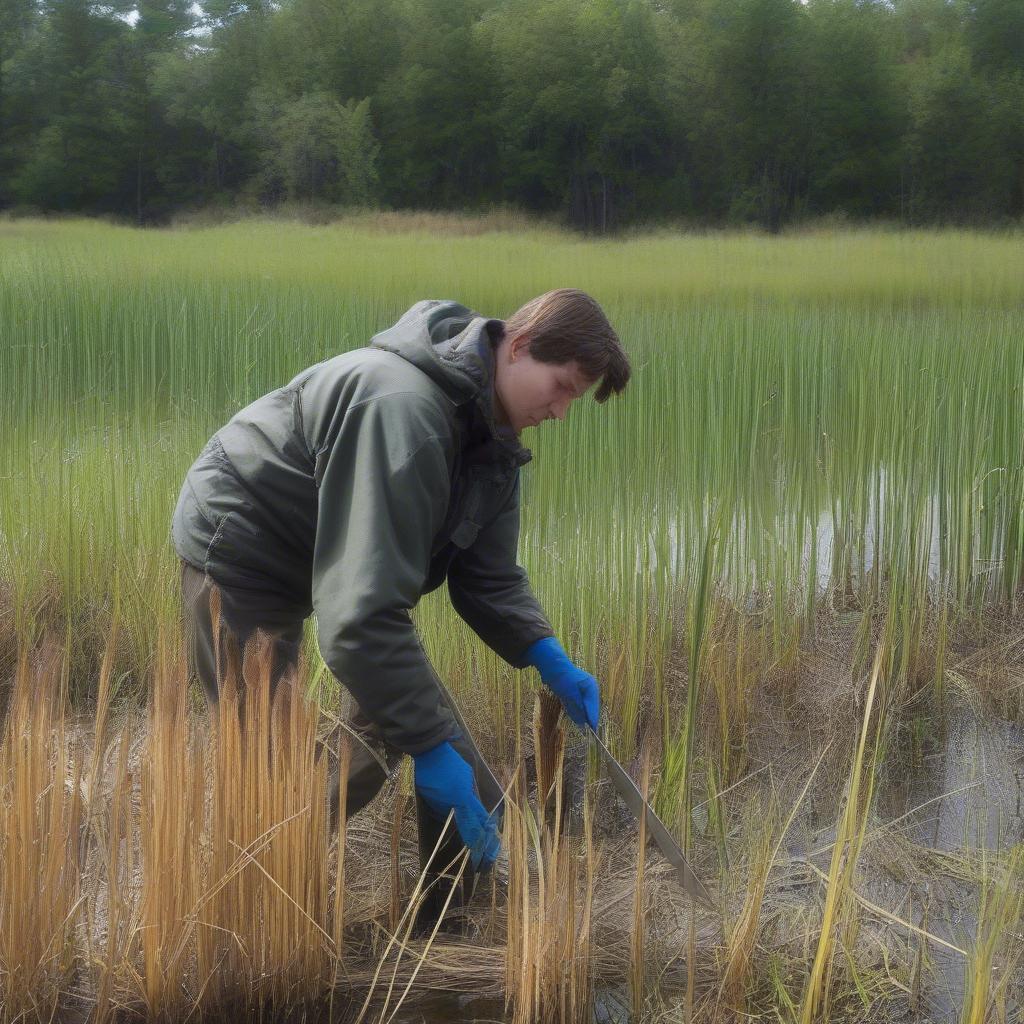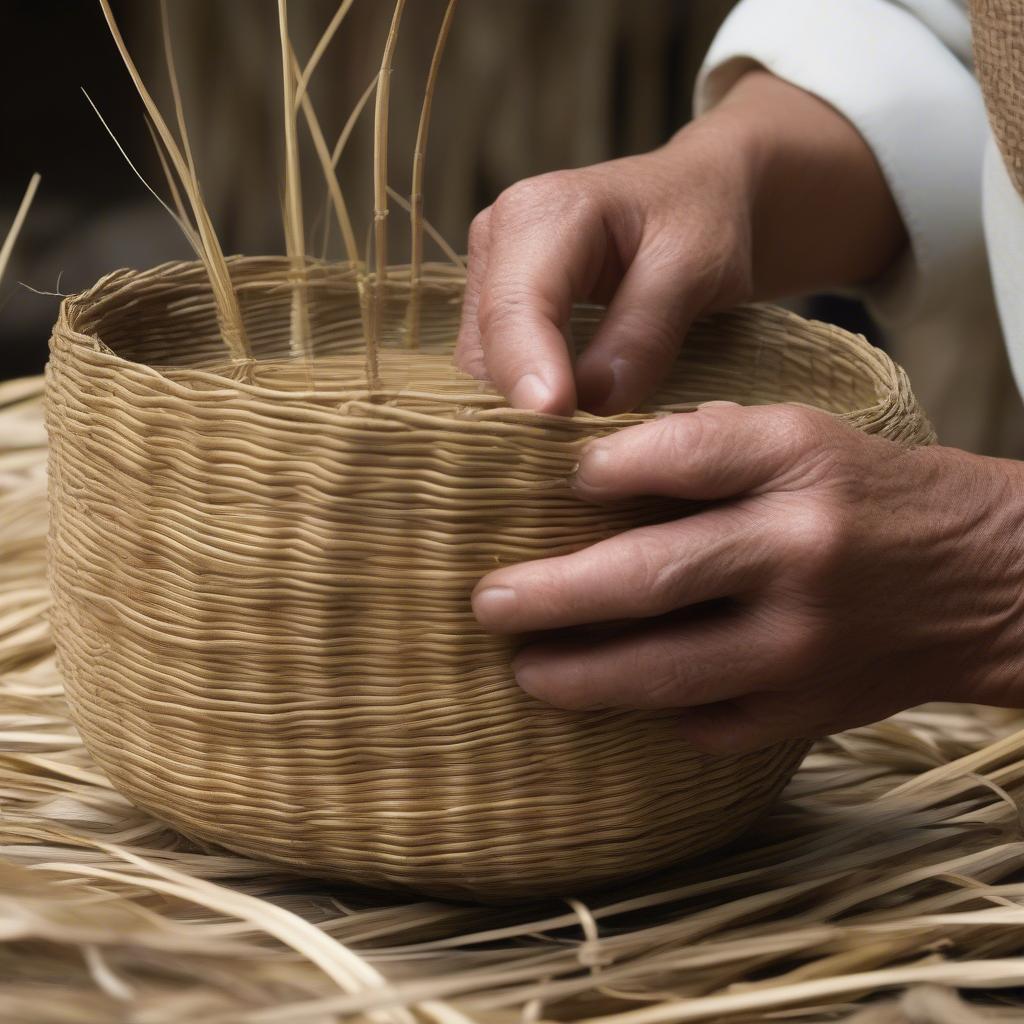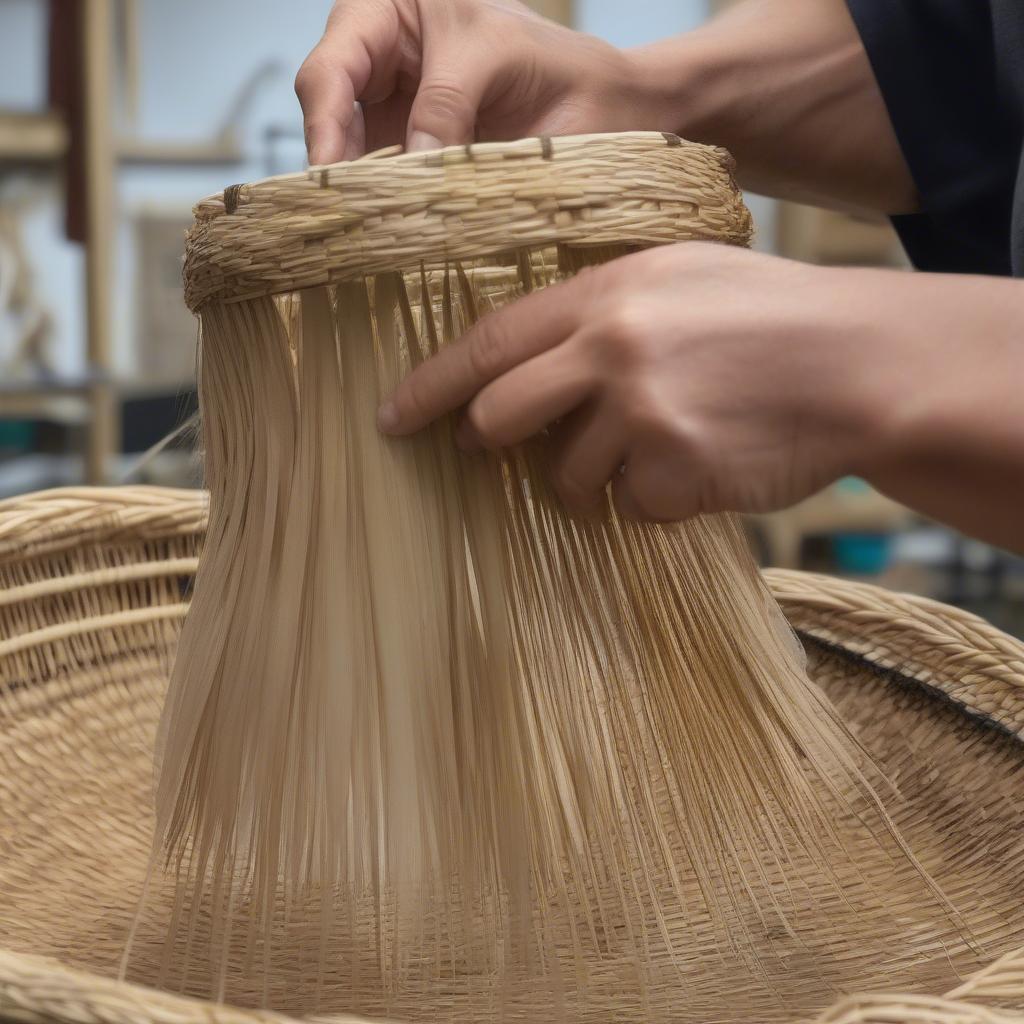Basket Weaving
Cattail Basket Weaving Instructions: A Comprehensive Guide
Learn the art of cattail basket weaving with our detailed instructions. From gathering cattails to creating beautiful, functional baskets, we’ll cover everything you need to know.
Gathering and Preparing Cattails for Weaving
Before you start weaving, you’ll need to gather your materials. The best time to harvest cattails for basket weaving is late summer or early fall, when the leaves are still green and pliable. Look for cattails growing in marshes, ditches, or along the edges of ponds. Cut the cattails close to the base of the plant, being mindful of the environment and avoiding over-harvesting. Once you’ve gathered your cattails, you’ll need to dry them. This can be done by spreading them out in a single layer in a well-ventilated area for several days, or by hanging them in bunches.
 Gathering Cattails for Basket Weaving
Gathering Cattails for Basket Weaving
Once dried, the cattails should be soaked in water for several hours or overnight to make them pliable for weaving. This step is crucial for preventing the cattails from breaking during the weaving process. Remember to keep the cattails moist throughout the weaving process by spraying them with water periodically.
Basic Cattail Basket Weaving Techniques
There are a variety of cattail basket weaving techniques, from simple twining to more complex coiled methods. For beginners, the twining method is a great starting point. This involves interweaving individual cattail leaves to create a basket base and sides.
 Twining Cattail Leaves for Basket Base
Twining Cattail Leaves for Basket Base
Start by creating a cross shape with four cattail leaves. This will form the center of your basket base. Begin weaving additional cattail leaves around the central cross, working in a circular motion. As you weave, keep the leaves tight and close together to create a sturdy basket. Gradually increase the diameter of the base by adding more cattails as you weave.
Building the Sides of Your Cattail Basket
Once you have reached your desired base size, you can begin building the sides of the basket. Bend the cattail leaves upwards at a slight angle. Continue weaving the cattails around the upright leaves, gradually building the height of the basket.
 Weaving the Sides of a Cattail Basket
Weaving the Sides of a Cattail Basket
As you weave the sides, you can experiment with different patterns and designs. Consider adding other natural materials, like reeds or grasses, for added texture and visual interest. You can also create different shapes and sizes depending on your project needs. From small, delicate trinket baskets to larger, more robust storage baskets, the possibilities are endless.
Finishing Touches and Care for Your Cattail Basket
Once you’ve reached the desired height, neatly tuck in the ends of the cattails to create a finished edge. You can also add a handle by weaving a length of cattail or other natural fiber around the rim of the basket. To care for your cattail basket, keep it dry and away from direct sunlight. Avoid placing heavy objects inside the basket, as this can cause it to lose its shape.
Conclusion: Crafting Beauty with Nature’s Gifts
Cattail Basket Weaving Instructions provide a pathway to creating not just baskets, but a connection with nature and a sense of accomplishment. With patience and practice, you can create beautiful and functional pieces of art using this readily available natural resource.
FAQ
- What is the best time to harvest cattails for weaving?
- How do I prepare cattails for weaving?
- What are some basic cattail basket weaving techniques?
- How do I build the sides of a cattail basket?
- How do I care for my finished cattail basket?
- Can I add other materials to my cattail basket?
- Where can I find more advanced cattail basket weaving patterns?
Common Scenarios and Questions
- Scenario: The cattails are brittle and breaking during weaving. Solution: Soak the cattails for a longer period or spray them with water more frequently.
- Question: Can I dye cattails? Answer: Yes, you can dye cattails using natural dyes like berries or plant extracts.
Further Exploration
For more in-depth information on basket weaving, visit our articles on wicker basket care and rattan furniture restoration.
Call our Hotline: +84 388 951 999, located in Hanoi, Vietnam, or at Tech Avenue, Suite 12, San Francisco, CA 94105, USA. Our customer service is available 24/7.
